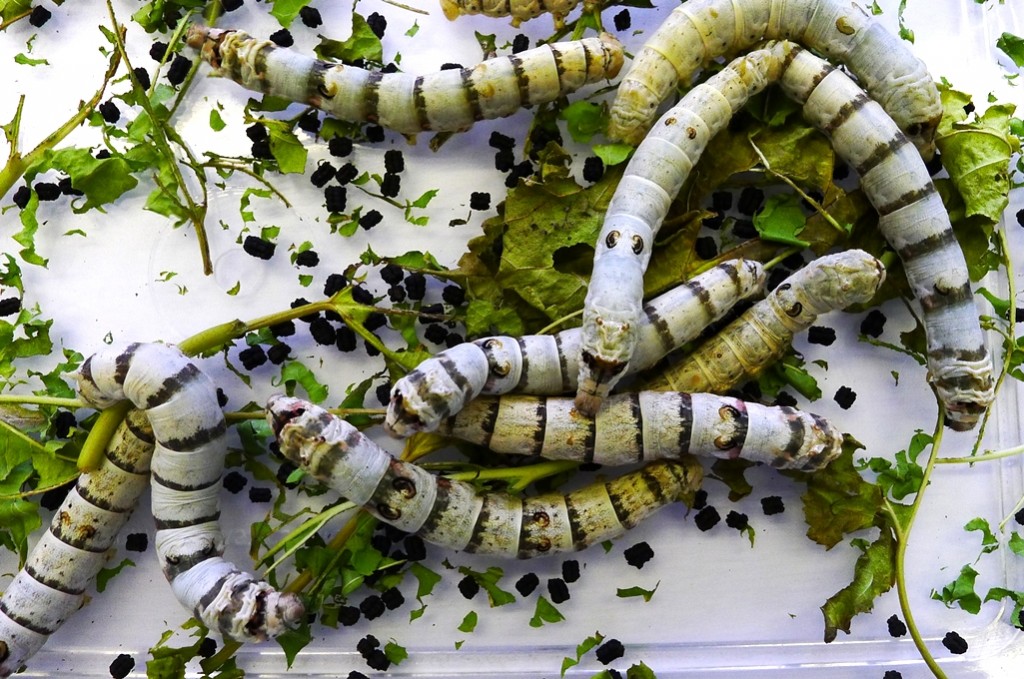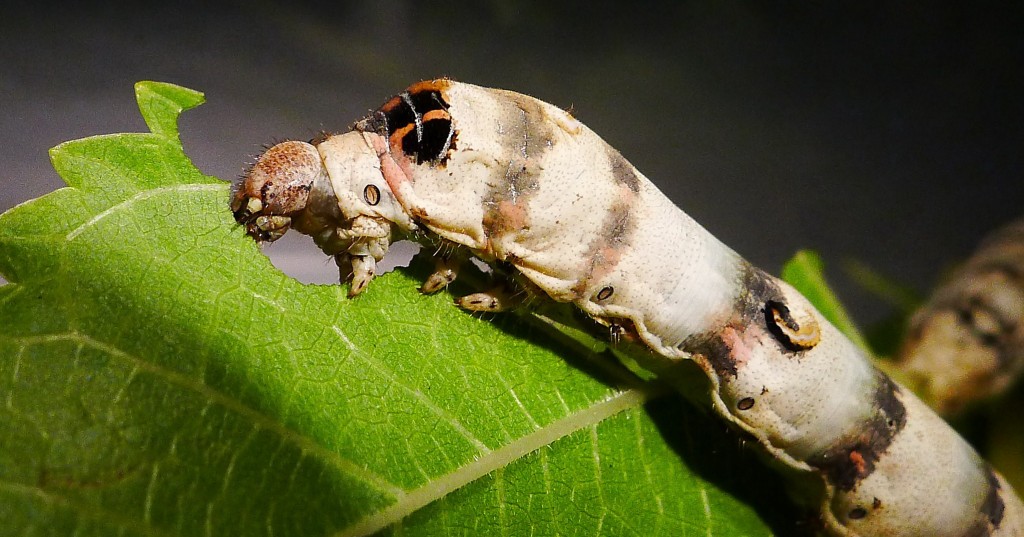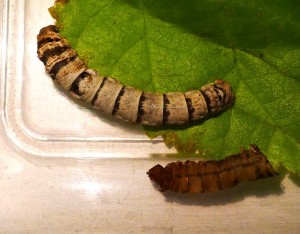I think I was a little premature last week in saying that most of the larvae were entering their fifth and final instar, as larvae have been moulting all this week, although I think now they are all in the fifth instar. Some larvae are now 10-12 cm long and have bulked out, being 1 cm in diameter. They certainly eat even the low quality food I have now for them (mainly yellow and senescing leaves) with relish, not stopping until the leaf is consumed. I can understand why silkworm rearers say that the large larvae need feeding six times a day – there is only so much food you can give them at once, and they soon finish it. At Reading, the larvae are fed three times a day during the week, and twice at the weekend. In between they sit patiently waiting for more food to be provided.
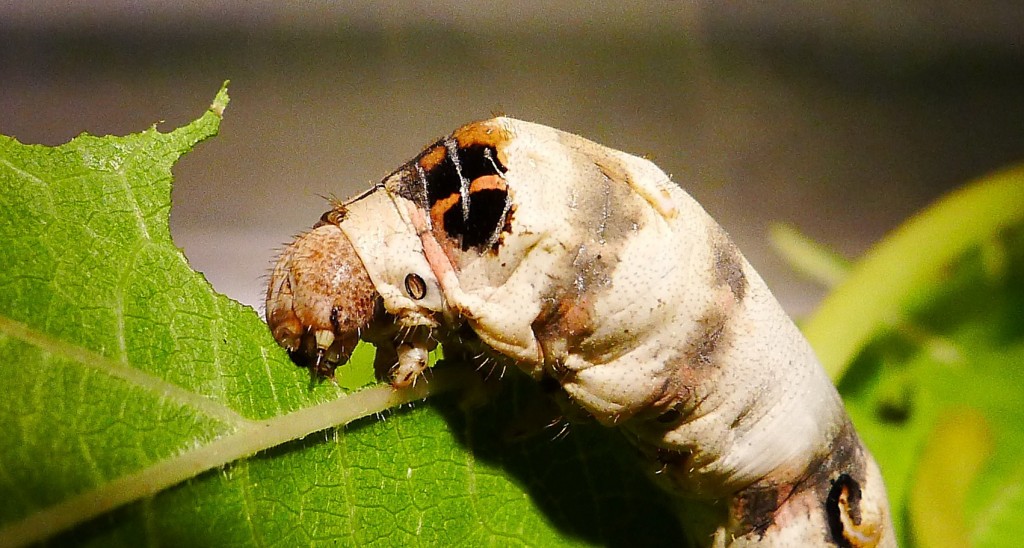
Close-up of a fifth instar silkworm larva feeding. How many of the silkworm structures visible can you name?
Having larvae at different stages makes management of them difficult, and is certainly something that should be avoided when rearing silkworms commercially. In our case it was probably not helped by having some of the larvae feeding slowly on artificial diet before being transferred to mulberry leaves.
We have had continued, but luckily low levels of, mortality through the week, and this seems to strike particularly during the moulting process. This could be for a number of reasons, poor food, getting trampled by other larvae, or damaged during the daily cleaning of the rearing containers. When I have noticed that a larva is about to moult I have tried to remove it to a separate container, so it can be left in peace and this usually has resulted in the caterpillar moulting successfully.
The photos below show part of the moulting process for one caterpillar, which seemed to be stuck with half the old skin still covering it.
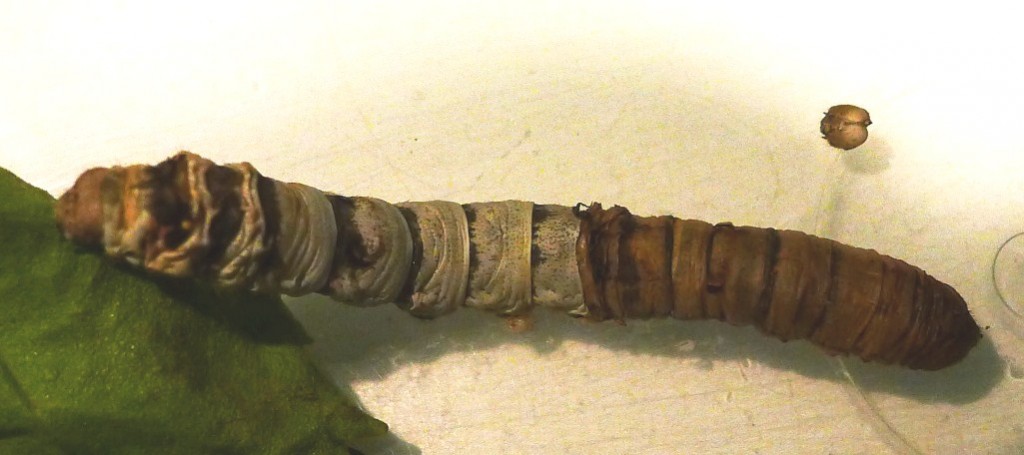
Silkworm larva with remains of old skin still attached to it. The little 'mask' that can be seen at the top right is the moulted head capsule from the larva - these tend to be moulted in one piece
I watched this larva thrashing around for 15 to 20 minutes and I thought it would not make it, but in the end it managed to extract itself form the skin, and was OK afterwards. It is really apparent that moulting for these large caterpillars can be rather difficult.
I hope that they will stop feeding soon, as there are virtually no even slightly green leaves left on the mulberry now, and that in my next update I can report on their pupation and cocoon formation.

